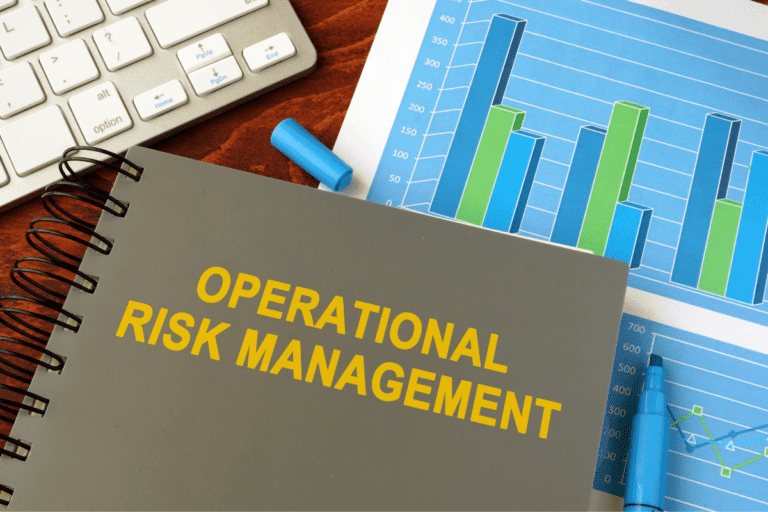An Explanation of Political Risk and Its Significance in Business Operations

Political risk refers to the possibility of financial or operational losses arising from political change and regulatory changes or events in a particular country. These events can include changes in government policies, political instability, social unrest, terrorism, or war.
Political instability or uncertainty can make it difficult for companies to plan and invest long-term. It can increase costs, delays, and disruptions in supply chains and distribution networks.
Companies may also face restrictions or penalties for non-compliance with new regulations or changes in tax, labour, or environmental regulations.
In some cases, political risk can physically damage a company’s assets or employees. This can include riots, civil unrest, or terrorist attacks. Companies operating in politically risky environments may also face reputational damage, loss of market share, or adverse publicity, which can impact their financial performance.
Given the potential impact of political risk on international business operations, companies must take steps to assess and manage political risk. This can include implementing risk management strategies, contingency planning, and diversifying their operations across multiple countries or regions. By doing so, companies can minimise the impact of political risk on their operations and ensure their long-term viability.
The Importance of Controlling and Mitigating Political Risk
Managing political risk is crucial for businesses to ensure long-term sustainability and profitability. Here are some of the reasons why:
- Protecting business operations: political risk can disrupt a company’s operations, resulting in losses of revenue, increased costs, or reputational damage
- Improving predictability: political risk can create uncertainty in the business environment, making it difficult for companies to predict future economic conditions or regulatory changes
- Enhancing stakeholder confidence: investors, customers, and other stakeholders place a premium on companies that can effectively manage political risk
- Gaining competitive advantage: managing political risk can also give companies a competitive advantage. Companies that can operate in risky environments or navigate complex political landscapes may be better positioned to gain market share or enter new markets where others cannot
- Ensuring business continuity: companies can better weather political shocks by developing contingency plans and risk management strategies to ensure the long-term viability
Political risk is inherent for a global business in today’s global economy.
By controlling and mitigating political risk, companies can protect their operations, improve predictability, enhance stakeholder confidence, gain a competitive advantage, and ensure long-term viability.

Understanding Political Risk
Types of Political Risk
As discussed, political risk is the risk that political decisions, events, or conditions will impact a business or investment. It can arise from various sources, such as elections, political violence, war, and changes in host government policy. This section will discuss some examples of the different types of political risk:
- Sovereign risk: a government fails to meet its obligations, such as debt repayment or failing to provide expected services. Sovereign risk is a significant factor in investments in foreign countries, as investors must be aware of the country’s political and economic stability to protect their capital
- Systemic risk: a government’s decision or a policy change will affect the economy. Macroeconomic policy changes, such as changes in taxation or interest rates, usually cause this type of risk
- Regulatory risk: when a government action changes statutes or regulations
- Macroeconomic risk: such as changes in monetary or fiscal policy create economic instability
- Political instability risk: a country experiences political unrest, such as political demonstrations, strikes or coups
- Political violence risk: such as riots or civil war, will impact a business or investment. This type of risk can be caused by social unrest or political instability in a country
- Geopolitical risk: a government takes action that affects the geopolitical environment, such as engaging in a military activity or conducting diplomatic relations, which can affect investments
- Currency risk: a government takes action that affects the value of its currency, such as devaluing or revaluing the currency
- Exchange rate risk: a country’s exchange rate change will affect a business or investment. A variety of factors, such as changes in government policy or economic conditions can cause this type of risk
- Event risk: a political change or natural disaster will affect a business or investment. This type of risk is usually unpredictable
How Political Risk Differs From Other Types of Risk
Political risk differs from other types of risk because it arises from political and regulatory changes or events in a specific country or region rather than from market forces or economic cycles.
Here are some critical differences between political risk and other types of risk:
- Causes: arises from factors outside the company’s control, such as changes in government policies, social unrest, or terrorism. Different types of risk, such as market risk or credit risk, are generally caused by economic or financial factors
- Scope: can impact a company’s operations in a specific country or region, whereas other types of risk can affect a company’s operations globally. For example, a company may face political risk in one country due to changes in government policies while simultaneously facing market risk in another country due to a downturn in the global economy
- Predictability: often less predictable than other types of risk. Political events or regulatory changes can be sudden and unexpected, making it difficult for companies to plan and respond. On the other hand, other types of risk may be more predictable, based on historical trends or economic indicators
- Control and Mitigation: political risk is more challenging to control and mitigate than other types of risk. While companies can use risk management strategies to manage market or credit risk, political risk may require more proactive measures such as building relationships with key stakeholders, monitoring political events and changes, and developing contingency plans
Companies operating in politically risky environments must be aware of these differences and proactively manage political risk to ensure long-term viability.
Assessing Political Risk

Factors Affecting Political Risk
Political risk is an inherent risk of conducting business in a foreign country or region, as the political environment in the country or region can significantly influence the amount of risk a company may face.
Political risk factors include the country or region’s political stability, government structure, and economic policies.
Political stability is the likelihood of a significant disruption or change in the country or region’s political landscape, such as a coup or a revolution.
Government structure and economic policies refer to the laws and regulations that govern the country or region and the fiscal and monetary policies that govern the economy.
The level of corruption in a country or region can also be a factor that affects political risk. Corrupt governments are often unpredictable and may be willing to take risks that other governments may not be willing to take. This can increase the risk of doing business in a country or region.
The geopolitical environment in a region can also affect political risk. Geopolitics studies the relationship between political power and geography, and geopolitical tensions can lead to regional instability. For example, suppose a country or region is located in an area with a high risk of war or political conflict. In that case, this can increase the risk of doing business in that region.
Finally, the socio-economic landscape of a country or region can also affect political risk. Socioeconomic factors such as poverty rates, education levels, and access to healthcare can all impact a country’s or region’s stability. They can increase the risk of doing business there. These factors can also lead to unrest and instability, increasing business risk in a country or region.
Tools and Methods for Assessing Political Risk
There are a variety of tools and methods available for assessing political risk. These include qualitative and quantitative analysis, scenario building, and risk mapping.
Qualitative analysis is conducted by analysing qualitative data such as public opinion polls, news reports, and interviews with industry experts. This analysis can help identify potential political risks and their likelihood of occurring.
Quantitative analysis involves using mathematical models and statistical techniques to assess the probability of potential political risks. This type of analysis can calculate the financial impact of a possible political risk.
Scenario building is a tool to assess the potential consequences of different political risks. This involves constructing a range of possible outcomes and their corresponding probabilities.
A political risk map is a tool used to evaluate the geographic spread of political risks. This involves creating a map of the world with regions identified as being at risk for political instability. This can help identify areas more or less vulnerable to risk.
Overall, these tools and methods help assess political risk and help to develop strategies to manage or mitigate the risks.
The Importance of Regular Risk Assessments
Navigating a constantly evolving political risk landscape can be arduous for businesses operating in unstable environments. Companies must conduct a regular political risk assessment to control and mitigate political risk. These assessments enable companies to stay informed and adjust their operations accordingly while identifying new and emerging risks that may impact their operations.
With the fluid nature of political risk, regular assessments help companies better understand the likelihood and impact of different risks and make informed decisions about where to focus their risk management efforts. Prioritising risks allows businesses to allocate their resources accordingly and develop contingency plans to minimise the impact on their operations.
Moreover, regular assessments demonstrate to stakeholders that the business is proactively managing political risk, thus improving the company’s reputation and attracting investors, customers, and partners. The dynamic nature of political risk means regular assessments are necessary to ensure that companies remain current on the latest trends and changes and make strategic decisions that protect their operations and assets.
To summarise, political risk assessments are essential for businesses operating in politically unstable environments. They enable companies to stay ahead of the curve, identify new risks, prioritise risk management efforts, and develop contingency plans. This, in turn, enhances stakeholder confidence and ensures the long-term viability of the business.

Managing Political Risk
The Steps for Managing Political Risk
Managing political risk in a constantly evolving environment can be complex and challenging. However, by following these steps, businesses can effectively manage political risk and protect their operations and assets.
- Conduct due diligence: before entering new markets, businesses should conduct due diligence to assess political risk. This includes researching local political and regulatory environments and potential risks associated with specific locations or industries.
- Build relationships: Strong relationships with key stakeholders, such as government officials and local communities, can help businesses mitigate political risk. Companies can better navigate political environments by building trust and fostering open communication.
- Identify and assess risk: the next step is identifying and assessing the risks that may impact the business. This requires conducting regular assessments and staying informed about changes in government policies, social unrest, and terrorist activities.
- Develop risk management strategy: once risks have been identified, the next step is to develop a risk management strategy. This involves prioritising risks and allocating resources accordingly. Businesses should consider developing contingency plans to minimise the impact of political risk on their operations.
- Monitor and evaluate: political risk is constantly evolving, so monitoring and evaluating the risk management strategy is essential. This includes monitoring changes in government policies, social unrest, and terrorist activities and assessing the effectiveness of contingency plans and other risk management efforts.
- Stay informed: finally, staying informed about the latest trends and changes in political risk is essential for managing political risk. Businesses should stay up-to-date with the latest news, attend conferences and events, and network with other professionals in their industry to stay ahead of the curve.
Managing political risk is a complex and dynamic process.
Conducting due diligence, building relationships, identifying and assessing risk, developing a risk management strategy, monitoring and evaluating, and staying informed are all key to successful political risk management. Following these steps, businesses can effectively manage political risk and protect their operations, assets and people.
The Importance of Having a Contingency Plan
While businesses can take measures to manage political risk, having a contingency plan in place is crucial for mitigating the impact of unexpected events.
A contingency plan is a proactive approach to managing political risk that enables businesses to quickly respond to sudden changes in the political environment. The plan should outline specific actions that can be taken in the event of political instability, such as protests, strikes, or government policy changes.
The importance of having a contingency plan for managing political risk cannot be overstated.
Without a plan, businesses may be caught off guard by sudden changes in the political environment, resulting in lost revenue, damage to their reputation, and even legal or regulatory action. A contingency plan provides businesses with a roadmap for responding to political risk, allowing them to take immediate action to protect their operations, assets and people.
Furthermore, having a contingency plan demonstrates to stakeholders that the business is taking a proactive approach to managing political risk. This can enhance the company’s reputation and attract investors, customers, and partners who are more likely to do business with a company with a solid risk management plan.
In addition to outlining specific actions, a contingency plan should include a communication strategy to inform stakeholders of the company’s response to political risk. Clear and timely communication can help minimise the impact of risk on the business and ensure that stakeholders remain confident in the company’s ability to navigate the political environment.
How to Incorporate Political Risk Management Into a Business Strategy
Fostering a culture of risk management is a critical component of effectively managing political risk. This requires businesses to create an environment where employees feel empowered to identify and report potential risks. Employees should be trained and supported to help them develop the skills and knowledge necessary to assess political risk.
Identifying key decision-makers is another critical step. Businesses should identify individuals with authority to make crucial decisions that may impact the business. This includes executives, board members, and other senior leaders. By involving these decision-makers in the risk management process, companies can ensure that they are aware of potential risks and can make informed decisions about managing them.
As discussed, scenario planning is another powerful tool for managing political risk. Companies can identify potential risks and develop control and mitigation strategies by planning scenarios. This involves developing hypothetical scenarios that may impact the business and assessing the potential impact of each scenario. This can help companies to be better prepared for unexpected events and to make more informed decisions about how to respond to them.
Using data and analytics is also essential. Businesses should monitor political trends and changes and collect data on key risk indicators. These indicators can provide valuable insights into political risk and help companies make more informed decisions. By using data and analytics, businesses can better understand political risk and make more accurate predictions about future events.
Finally, collaborating with experts is an essential component of managing political risk. This includes working with consultants, analysts, and other professionals who deeply understand the political environment. By collaborating with experts, businesses can gain valuable insights and advice on managing political risk. This can help them to make more informed decisions and to be better prepared for unexpected events.
Controlling and Mitigating Political Risk

Strategies for Controlling and Mitigating Political Risk
Managing political risk is an ever-present reality for businesses operating in an international context. To control and mitigate these risks, companies should consider strategies such as:
- Establishing Political Risk Insurance (PRI): one of the most effective strategies for mitigating political risk. PRI helps to protect businesses from the financial losses associated with political events such as expropriation, currency inconvertibility, or contract repudiation
- Diversifying operations: companies can also reduce their political risk exposure by diversifying their operations across different countries and regions. This helps to spread the risk among a more significant number of markets and helps to mitigate the impact of any one political event
- Developing relationships: establishing relationships with political leaders and decision-makers is another way to reduce political risk. Companies can use these relationships to understand the political climate of a country better and to gain access to information that can help them to anticipate and mitigate potential risks
- Investing in risk mitigation programs: companies should invest in programs, such as political risk analysis and monitoring, to help identify and anticipate potential risks
- Implementing risk management strategies: companies should develop policies and procedures for responding to political events and should ensure that they comply with all relevant laws and regulations
These strategies can help to safeguard against potential financial losses due to political events.

The Importance of Diversification and Internationalisation
Diversification and internationalisation are key elements in effective political risk management. The ability to diversify risk across different geographies and markets is an invaluable tool to help reduce the volatility of political risk events.
Internationalisation allows companies to benefit from new markets, while diversification reduces the concentration of risk in one market.
Internationalisation can also provide access to resources and expertise and the potential to benefit from developing countries and the growth of emerging markets.
By diversifying, companies can spread their risk across multiple markets, reducing the potential impact of any one political event.
In addition, diversification and internationalisation can provide access to new customers and markets, which can benefit long-term growth and profitability.
Ultimately, diversification and internationalisation are essential components of an influential political risk management strategy, allowing companies to reduce the risk of political events and benefit from new markets and opportunities.
How to Minimise the Impact of Political Risk on Your Business
How can companies navigate political risk?
This section explores strategies companies can use to reduce their exposure to political risk and protect their investments, operations, assets and people from potential losses. From establishing a comprehensive risk management system to investing in political risk insurance, these strategies can help businesses navigate the political landscape and safeguard their operations.
- Develop a comprehensive understanding of the political landscape in which the business operates. Monitor changes in the political landscape and analyse their potential impact on your operations
- Establish a comprehensive risk management system that considers political risk. Develop contingency plans for different political scenarios
- Strengthen relationships with domestic and international stakeholders, such as government officials and political parties
- Invest in developing relationships with local communities, ensuring that the company’s operations are not seen as a threat to local interests
- Invest in research and development to develop innovative products and services that are more resilient to political risk
- Diversify operations across multiple countries and jurisdictions
- Increase transparency and accountability in reporting practices and business activities
- Create an effective response and contingency plan to deal with a potential political risk
- Maintain a good reputation with the public through effective communication and engaging in corporate social responsibility initiatives
- Invest in political risk insurance to protect against potential losses due to political risk
Final Thoughts

Political risk is a significant concern for businesses operating in unstable political environments.
It refers to the potential for political decisions or events to affect a company’s operations, assets, people or profits.
To effectively manage political risk, businesses should take a comprehensive approach that includes identifying potential risks, creating contingency plans, and integrating risk management into their decision-making processes. This should be supported by establishing a solid risk management culture, identifying key decision-makers, conducting scenario exercises, using data and analytics, contingency planning and collaborating with experts.
By taking these measures, businesses can make well-informed decisions safeguarding their operations, assets and people from political risk.






